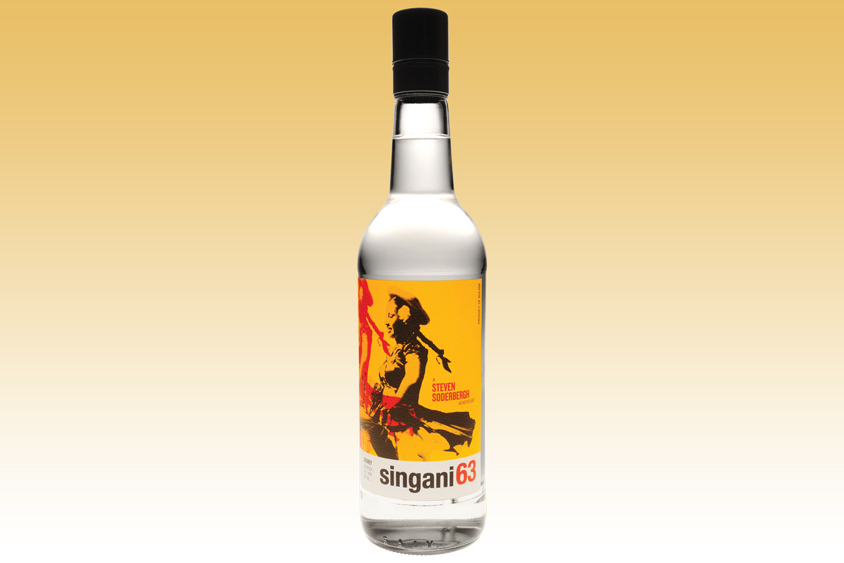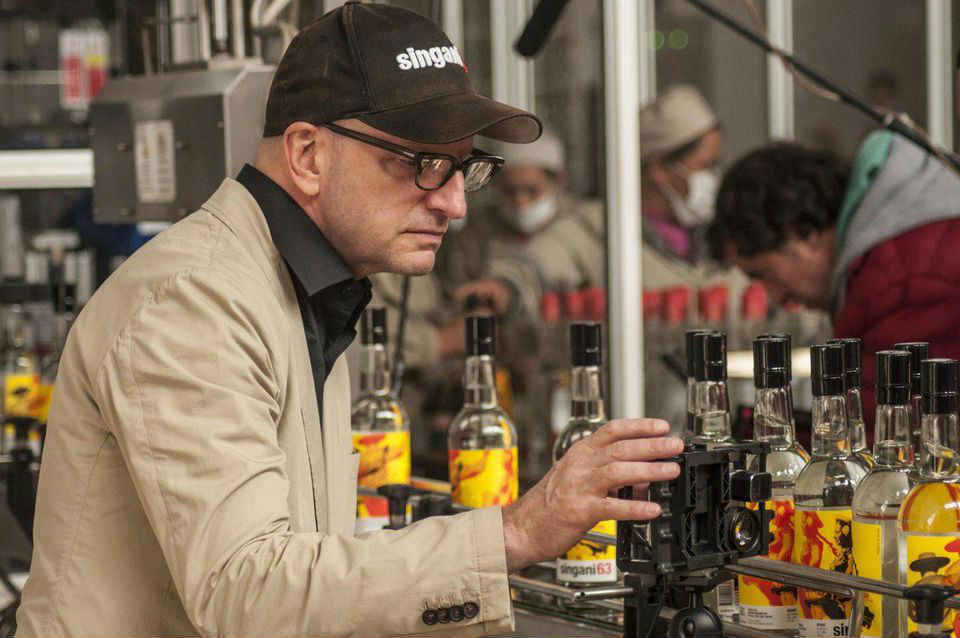Steven Soderbergh spoke to a packed room at Thirst Boston this past April. The film director best known for Sex, Lies, and Videotape wasn’t there to talk about cinema, but something else he’d discovered while making a movie.
“We were starting production on Che,” Soderbergh said. “I was given a bottle of Singani as a gift. It wasn’t being exported outside of Bolivia, so [the Bolivian casting director] had to go into the Bolivian quarter and buy a bottle on the black market.”
The illicit bottle was cracked open immediately, and Soderbergh enjoyed it on the rocks. After Che wrapped, his thirst for Bolivia’s national spirit remained.
“When the film was finished shooting I was convinced by some of the crew to bring Singani to the United States,” he said. “I didn’t know what that meant and what it involved, but selfishly speaking I just wanted a supply.”
Ten years later Soderbergh has emerged as the unlikely face of a campaign to win Singani category recognition in the United States, and his very own brand—Singani 63—is the tip of the spear.
Singani Basics

Photo: Singani 63.
Singani’s origins stretch back 500 years, to when missionaries first brought a specific grape—the Muscat of Alexandria—to the Bolivian Andes. Singani is distilled from the grape’s white wine, which broadly places it in the category of brandy.
While Singani 63 is currently being sold as brandy in the United States—much to Soderbegh’s chagrin—Singani is a unique spirit category in Bolivia and must confirm to highly specific standards:
- It must be made from a single grape, the Muscat of Alexandria.
- Both the growing and distilling must occur within a 22,000-hectare plot of land within the Bolivian Andes.
- The grapes must be grown and distilled at a minimum of 5,250 feet.
These rules exist to preserve the distinct characteristics associated with Singani. The extreme growing altitude increases exposure to UV rays, which forces the grapes to grow a thick skin. This process accentuates the grape’s floral characteristics, as its aromatic notes are derived from the skin.
The elevated distillation plays a role, too, according to Jonathan Braithwaite, Singani 63’s chief operating officer.
“Because the distillery is also at this high elevation you have a lower boiling point for distillation because of air pressure,” Braithwaite said. “You burn off those harsher, more aggressive notes. Those delicate aromatic notes are able to sustain through the distillation.”
Enter Casa Real
Casa Real, a fourth generation family-owned distillery, is responsible for making Singani 63. They stand out within the field of Singani for using cognac copper pot stills, which are more suited to transferring aromatic notes than column stills. Singani 63 is distilled twice at 6,000 feet and comes off the still at 73% alcohol-by-volume. Afterward, it’s rested for at least eight months in stainless steel.
“Micro-oxidation happens within the tank, and you will taste it,” said Braithwaite. “There is a viscosity and a roundness that is part of the profile.”
Unlike many brandies, Singani is not aged in barrels. That’s due to both the spirit’s emphasis on the grape, and its hyper-local nature.
“When you start using the wood of somewhere else, you’re introducing that other region into it as well,” Braithwaite said, “which goes against the idea of what Singani really is.”
Coming to America

Steven Soderbergh at Casa Real. Photo: Singani 63.
Until recently, Singani had been rarely seen or heard outside its home country’s borders—in large part due to Bolivia’s land-locked status. Its path to the states has been bumpy, to say the least.
Soderbergh had to wait three and a half years to receive his importer’s license from the government. Once that license was in hand—and the first shipment of Singani 63 was brought to a New Jersey warehouse—Soderbergh couldn’t resist pulling the occasional bottle for himself as he waited for business relationships to finalize.
“About a year into this stuff being in New Jersey we got a call from the TTB [Alcohol and Tobacco Tax and Trade Bureau] going, ‘Where did all these bottles go? They’re not being sold, what’s happening?’ And I thought, wow, that’s probably a bad sign when your personal consumption is flagged,” Soderbergh said.
The Fight for Recognition
In order for Singani to win recognition as its own spirit category within the United States, it must receive approval from four different agencies: the TTB, the ATF, the FDA, and the Department of the Treasurer. Soderbergh describes the current situation as an “impasse.”
“While we’ve met the technical criteria and they’ve acknowledged how narrow Singani is in terms of its production, they’ve said ‘We don’t think that it’s confusing to people that this is called brandy, and secondly, it’s not a big enough business for us to bother to give you this category.’”
The catch-22 nature of the bureaucratic response visibly frustrates Soderbergh.
“This is something that they’ve just decided by sitting around in an office… you’re not out there trying to tell people what this is, and hearing them go, ‘Well it says brandy, why is it clear? I don’t understand.’ And especially for millennials. You can’t have a successful brand without getting some attention from millennials. Their associations with brandy are not positive.”
The Bolivian government has been supportive of Singani 63’s recognition quest, and this past February made an offer to recognize Tennessee whiskey and bourbon as products of the United States in exchange for reciprocal recognition of Singani—a deal that Singani 63 helped broker. This approach mirrors the success of cachaça, which won a 10-year bid for category recognition in the United States after the Brazilian government recognized Tennessee whiskey and bourbon.
“Interesting, Weird, Random”
The experience of Singani 63 has given Soderbergh a few new hats to wear: importer, lobbyist, and broker of international trade agreements. But it seems to appeal most to his role as a storyteller.
“It’s amazing to me how random this all is,” he said. “This grape traveled thousands of miles from another continent into the southern part of Bolivia and found its ultimate expression in this terrible dirt. It’s a really interesting, weird, random sequence of events that led to the production of Singani from this one grape. It’s kind of crazy.”



